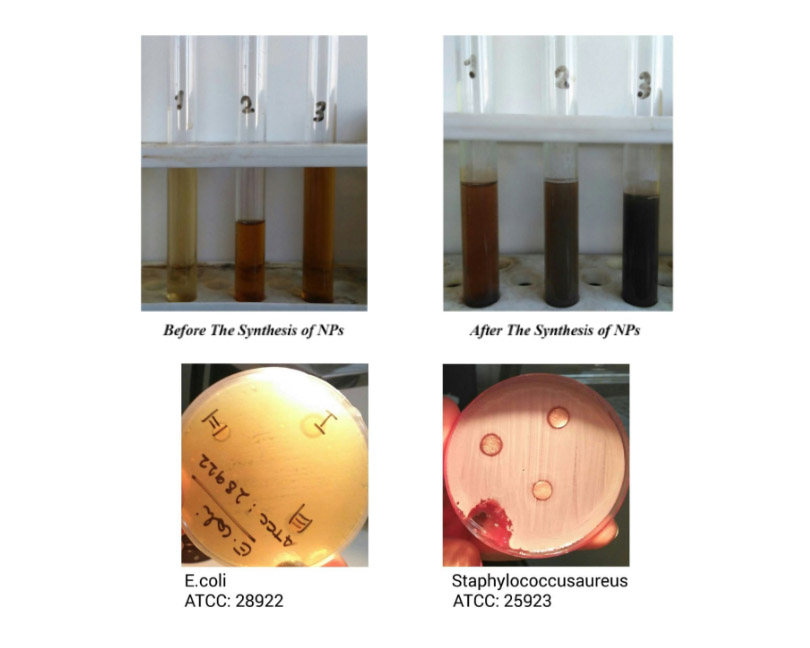Antibacterial efficacy of green synthesized silver nanoparticles from rosemary, pennyroyal, and eucalyptus extracts against E. coli and S. aureus bacteria
- 1 Department of Metallurgical and Materials Engineering, Faculty of Technology, University of Gazi 06500, Ankara, Turkey
- 2 Drug Applied Research Center, Student Research Committee, Tabriz University of Medical Sciences, Tabriz P.O. Box 51656-65811, Iran
Abstract
Bacteria, including those causing hospital-acquired infections, have become a significant concern for human health due to their resistance to common antibiotics. Silver nanoparticles possess highly antimicrobial properties and can be applied in various medical and healthcare contexts. The purpose of this research is to produce silver nanoparticles through a bio-based (green synthesis) method using extracts from the leaves of rosemary, pennyroyal, and eucalyptus plants and to investigate their antibacterial activity. Extracts from the leaves of rosemary, pennyroyal, and eucalyptus plants were prepared and added to a silver nitrate solution in the process of synthesizing silver nanoparticles. The production of silver nanoparticles in the solution was investigated by recording the color changes during the experiment and measuring the absorption levels across different wavelengths using a spectrophotometer. The antimicrobial effects exhibited by the silver nanoparticle solution were investigated and confirmed targeting both Staphylococcus aureus and Escherichia coli (E. coli) strains using the agar well diffusion method. Nanoparticles with diameters approximately ranging from 18 to 80 nanometers were successfully synthesized, exhibiting a varied assortment of spherical geometries and a notable purity level of 88% silver. Furthermore, nanoparticles synthesized from rosemary plant extract exhibited superior antibacterial properties compared to those from other plant extracts.
Downloads
References

Copyright (c) 2024 Shanli Salahi, Tayyebeh Ghaffari

This work is licensed under a Creative Commons Attribution 4.0 International License.
Copyright
Authors are the copyright holders of their published papers in Synthesis and Sintering, which are simultaneously licensed under a Creative Commons Attribution 4.0 International License. The full details of the license are available at https://creativecommons.org/licenses/by/4.0/.
All papers published open access will be immediately and permanently free for everyone to read, download, copy, distribute, print, search, link to the full-text of papers, crawl them for indexing, pass them as data to software, or use them for any other lawful purpose without any registration obstacles or subscription fees.












